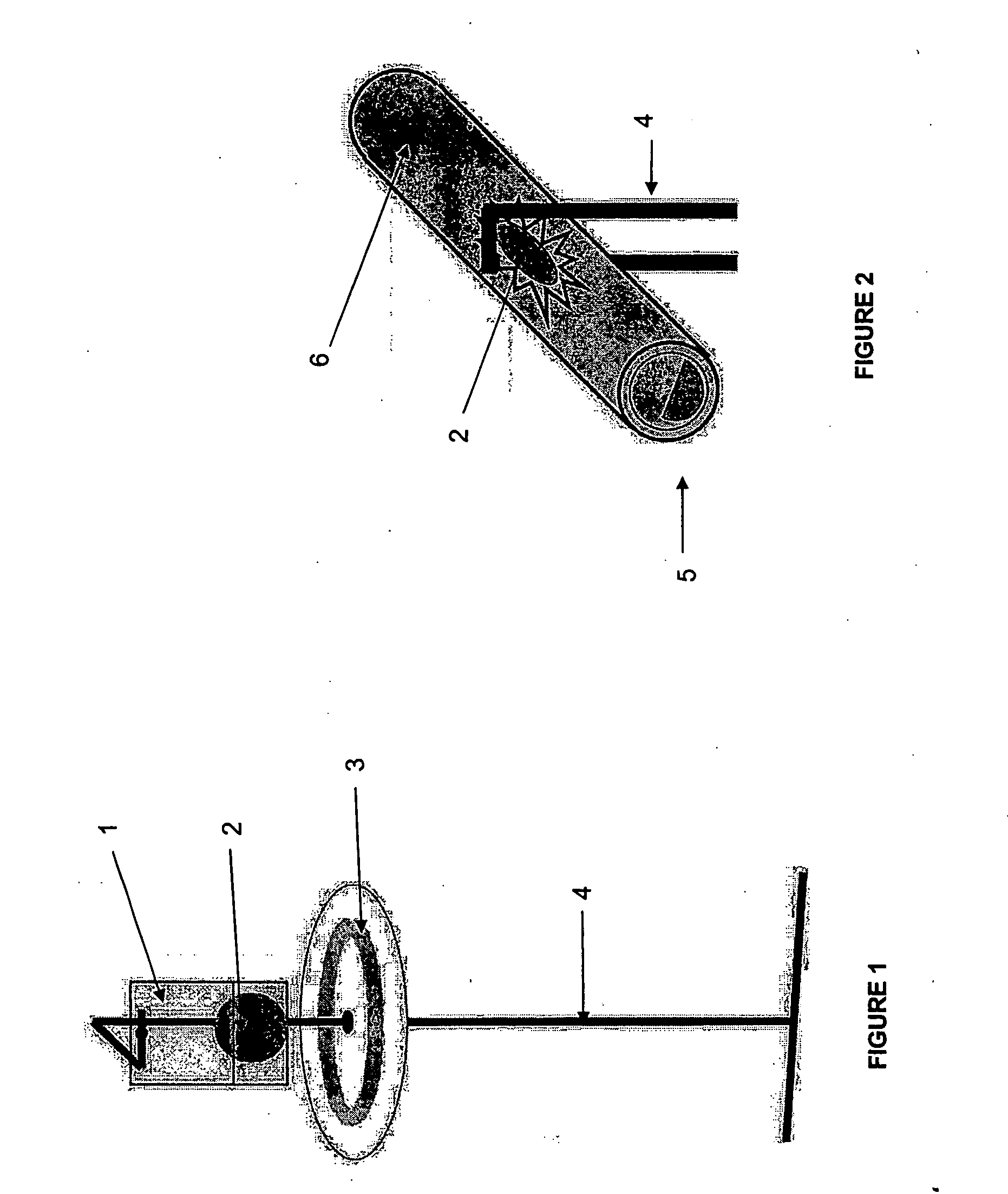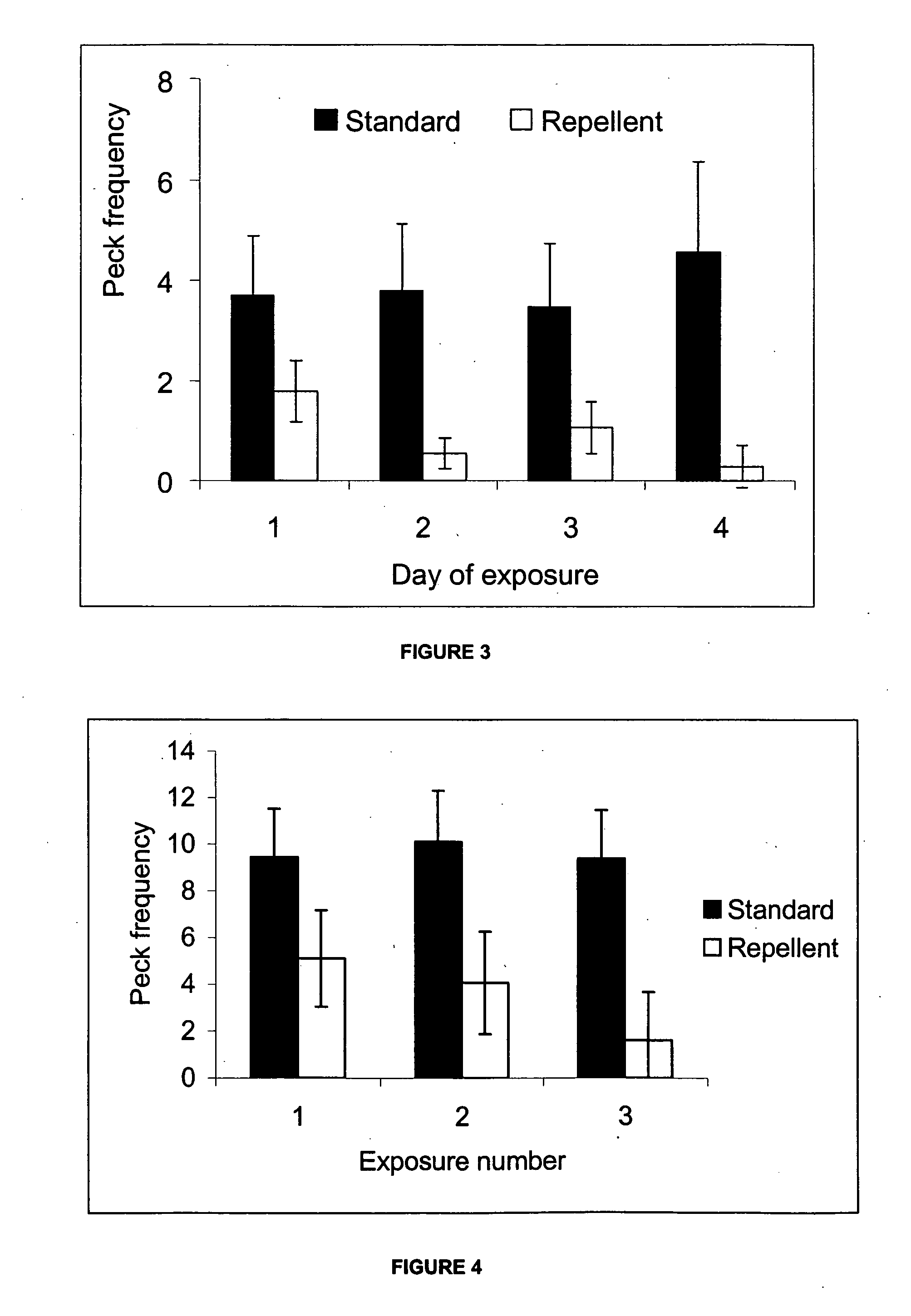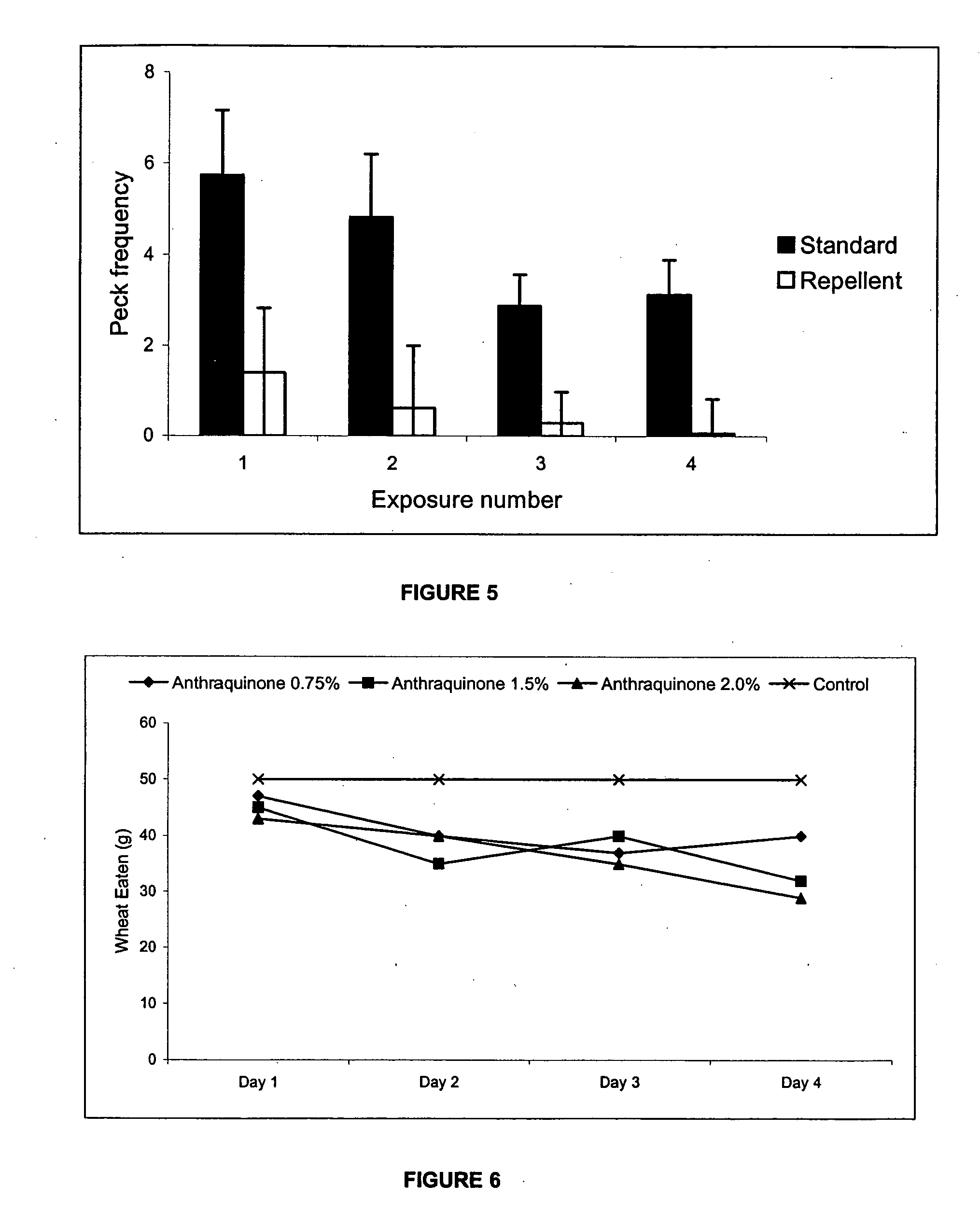Bird repellent
- Summary
- Abstract
- Description
- Claims
- Application Information
AI Technical Summary
Benefits of technology
Problems solved by technology
Method used
Image
Examples
example 1
The Palatability of Varying Baits and Varying Bird Repellent Compounds on Possums and Rats
[0070] In this example the repellence of neem (a known repellent), lime (a known repellent), anthraquinone and d-pulegone (compounds of the present invention) in cereal, carrot and paste baits are tested on wild possums and rats.
[0071] The following bait treatments are compared: [0072] standard (solution of dye+water+0.1% cinnamon oil) [0073] cinnamamide (solution of dye+water+0.5% cinnamamide) [0074] neem (solution of dye+water+2% neem oil) [0075] lime (solution of dye+water+2% agricultural lime) [0076] anthraquinone (solution of dye+water+0.75% anthraquinone formulation). [0077] d-pulegone (solution of dye+water+1% d-pulegone) [0078] salt (solution of dye+water+salt (10% of total bait weight))
[0079] All quantities are given in percent by weight.
[0080] Treatments are applied to the cereal and carrot bait surface at a rate of 10% of total bait weight. The treatments are applied to the paste...
example 2
The Palatability of Different Combinations of Bird Repellent Compounds to Wild Possums and Rats
[0088] The following bait treatments were compared (only carrot baits are compared): [0089] standard (solution of dye+water+0.1% cinnamon oil) [0090] anthraquinone 1 (solution of dye+water+1% anthraquinone formulation) [0091] anthraquinone 2 (solution of dye+water+2% anthraquinone formulation) [0092] d-pulegone 1 (solution of dye+water+1% d-pulegone) [0093] d-pulegone 2 (solution of dye+water+2% d-pulegone) [0094] combination 1 (solution of dye+water+1% anthraquinone formulation+1% d-pulegone) [0095] combination 2 (solution of dye+water+2% anthraquinone formulation+2% d-pulegone) [0096] salt (solution of dye+water+salt (10% of total bait weight))
[0097] All quantities given in percent by weight and all bait treatment, bait station set-up and subsequent measurement are as described in Example 1.
2.1 Possums
[0098] There was no significant difference between the bait treatments in the prop...
example 4
The Repellence Effect on North Island Robins From Bait Treated With Blue Dye, Anthraquinone and Combinations of These Compounds Compared to Standard Repellent Compounds
[0113] This experiment investigates whether the addition of a novel visual cue and a secondary repellent (anthraquinone) to baits influences the feeding behavior of wild robins.
[0114] Robins were trained to approach observers within their territory and were offered repellent-treated (blue color+anthraquinone) and standard (green color+cinnamon oil, as used for pest control operations in New Zealand) dough baits over four consecutive days on a test arena on a forest floor.
[0115] Blue dye is used as the novel visual cue as this is known to have the least repellent effect from prior art experiments. By proving an effect with blue dye, it can be assumed that similar deterrent effects can also be attained using visual cues that are known to have a greater repellent effect on birds.
[0116] Both choice and no-choice tests...
PUM
 Login to View More
Login to View More Abstract
Description
Claims
Application Information
 Login to View More
Login to View More - R&D
- Intellectual Property
- Life Sciences
- Materials
- Tech Scout
- Unparalleled Data Quality
- Higher Quality Content
- 60% Fewer Hallucinations
Browse by: Latest US Patents, China's latest patents, Technical Efficacy Thesaurus, Application Domain, Technology Topic, Popular Technical Reports.
© 2025 PatSnap. All rights reserved.Legal|Privacy policy|Modern Slavery Act Transparency Statement|Sitemap|About US| Contact US: help@patsnap.com



